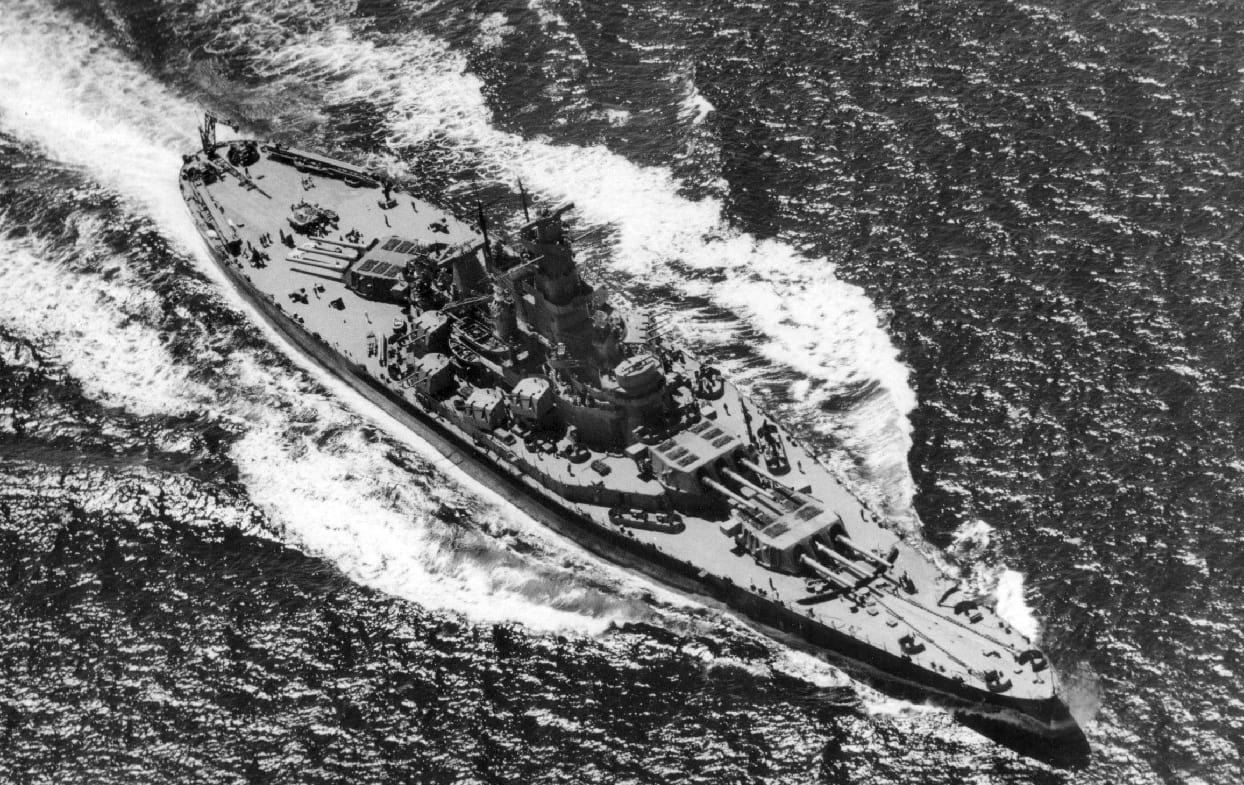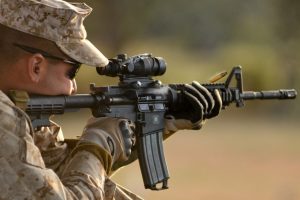The USS South Dakota (BB-57) and USS Indiana (BB-58) were demolished and sold. Nonetheless, the USS Massachusetts (BB-59) and USS Alabama (BB-60) were each maintained as museum ships, as their names indicate.

USS South Dakota. Image: Creative Commons.
The South Dakota Class, the U.S. Navy’s first post-Treaty battleships, were the first of their kind. In the late 1930s, with a war on the horizon and the Washington Naval Treaty and later London Naval Treaties dead in the water, the U.S. Navy pressed forward with a new class of fast battleships—to be named after South Dakota. Designed to the same treaty standard displacement limit of 35,000 long tonnes (35,600 tonnes) as the preceding North Carolina class. Even with the same main battery of nine 16-inch/45 caliber Mark 6 guns in three-gun turrets, the new South Dakota-class battle wagons were smaller and significantly better protected.
Navy historians sometimes refer to the new class of warships as the “greatest treaty battleships ever constructed.”
Unique was the naming decision for the lead ship and hence a class of battlewagons, as it was effectively a redo for the forty-first state.
During the First World War, the United States Navy initiated a new class of battleships. Intended to be the “ultimate dreadnoughts” with “all-or-nothing” defense, their displacement would have been 12,000 tonnes larger than the other Standards, yet their speed would have increased by only two knots. Similar to the program that developed the Lexington-class battlecruisers, this class was commissioned. Unfortunately, the conflict ended before the completion of any new battleships.
The intended South Dakota-class vessels fell victim to the Washington Naval Treaty of 1922 rather than a competing power. All six planned battleships were canceled when the vessels were between 11 and 38 percent constructed.
Following the conclusion of the naval treaties, the United States Navy swiftly implemented its plans for constructing fast battleships—vessels equipped with large cannons and fast enough to keep up with aircraft carriers.
The initial two vessels of this class were placed on order on April 4, 1938. Two months later, updated the flawed authorization in response to escalating international tensions. To include an additional pair of battleships. The “escalator provision” of the Second London Naval Treaty had already been invoked, allowing the 16-inch guns to be mounted on the revised design. However, Congress stipulated that the boats may not exceed the 35,000-ton limit established by the Washington Naval Treaty.
The most noticeable difference from the North Carolina class was a 60-foot reduction in the length of the hull, which enhanced horizontal and underwater protection. In addition, unlike the North Carolina-class battleships, which featured twin funnels, the South Dakota-class ships had a single funnel integrated into the bridge’s rear portion.
The class was also equipped with sixteen to twenty-five-inch (127mm) D.P. cannons, seventy-six 40mm (1.6-inch) anti-aircraft guns, and sixty-seven solitary 20mm (0.8-inch) anti-aircraft guns. The armor measured 12.2 inches (310 millimeters) at the belt, 11.3 inches (287 millimeters) at the bulkheads, and 11.3–17.3 inches (287–349 millimeters) at the barbettes. In addition, the deck featured approximately 38 mm (1.5 inches) of the plate. The internal side armor extended as a longitudinal anti-torpedo bulkhead from the heavy armor deck to the double bottom at an angle of 19 degrees.
Thus, the battleships were well-armored and armed. During World War II, the four South Dakota class battleships saw considerable action, but their careers were cut short when the war ended. Each vessel was decommissioned in 1947 despite being commissioned in 1942. In the early 1960s, they proposed numerous plans to modernize or convert warships for new purposes, but none materialized. The USS South Dakota (BB-57) and USS Indiana (BB-58) were demolished and sold. Still, USS Massachusetts (BB-59) and USS Alabama (BB-60) have been preserved as museum ships, as their names imply, and continue to honor the veterans who served aboard them and remind the world that this was the best class of treaty battleships ever to cruise the world’s waters.

The battleship USS Missouri (BB-63) stands moored to a pier at Naval Station Pearl Harbor, Hawaii. Missouri is in Hawaii to take part in the observance of the 50th anniversary of the Japanese attack on Pearl Harbor.

Iowa-class. Image Credit: Creative Commons.

An aerial port bow view of the battleship USS NEW JERSEY (BB-62) launching an RGM-84 Harpoon missile on the Pacific Missile Test Center Range.






